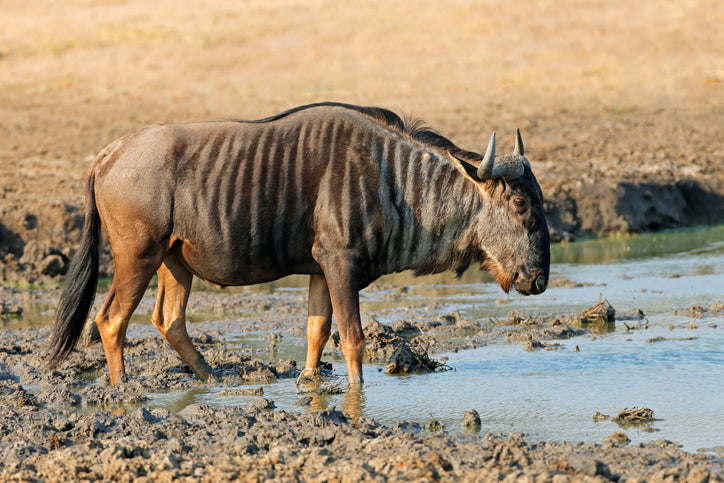
Wildebeest
Share
The Wandering Wildebeests of Kruger National Park 🦬
Witness the dramatic spectacle of the Wildebeest, also known as the Gnu, as they roam the vast plains of Kruger National Park. These robust animals are famed for their annual migrations, displaying a relentless spirit and incredible endurance.
Strength in Numbers: Wildebeests are known for their strong herd instincts, often moving in large groups to enhance their chances of survival from predators. These herds can be seen grazing across the park’s grasslands, their movements dictated by the seasonal rains and the availability of fresh pasture. 🌾🌍
Adaptations for Survival: Equipped with keen senses and sturdy bodies, Wildebeests are built to cover long distances. Their broad muzzle and rugged teeth are perfectly adapted for grazing, allowing them to quickly consume large amounts of grass during their migrations. 🏞️🌿
Social Structure: The social life of Wildebeests is fascinating. Herds are usually composed of females and their offspring, led by dominant males who defend territories to attract females. The social dynamics within the herd play a crucial role in their migration patterns and breeding cycles. 🐄👨👩👧
Diet and Habitat: Wildebeests primarily feed on grasses, making them pivotal in maintaining the health of the savannah ecosystem. Their grazing patterns help prevent overgrowth and ensure a balanced habitat for other wildlife species. 🌱🐾
Fun Fact for Kids: Did you know Wildebeests can run at speeds of up to 80 kilometres per hour when threatened? This burst of speed is crucial for escaping predators and navigating the challenges of their migratory routes. 🏃♂️💨
Engage and Learn: As you colour in the Wildebeest on your Kruger Park roll, imagine the thunderous sound of a migrating herd. Colouring these majestic creatures offers a window into the dynamic and interconnected life of Kruger’s grasslands. 🖍️📘